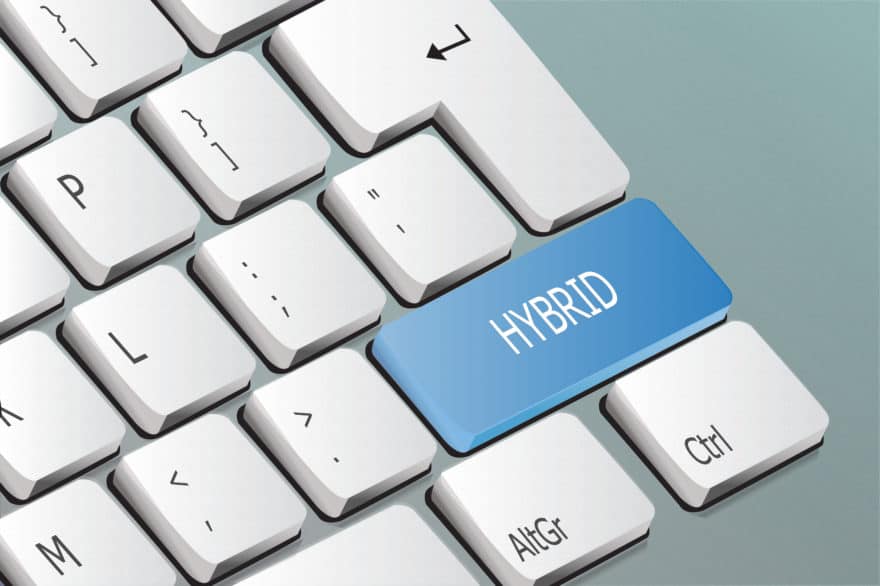At its simplest and according to industry insiders, the term ‘hybrid IT’ is used almost exclusively to describe a combination of on-premise and cloud-based services. In my opinion, it could also be used to describe the IT infrastructure and processes necessary to allow office-based employees to work from home when necessary. For many companies and indeed governments, it became necessary during the current Covid-19 pandemic and unfortunately, they soon discovered that their business continuity/emergency response plans failed in many areas.
Allowing Working from Home
The decision to allow working from home (WFH) is never taken lightly by company management as many believe that employees require supervision, direction, or management and that a lack of these leads to a lack of productivity. Among professional employees, the reverse is often true. Business or organisational stakeholders must embrace the concept of remote working, especially true during a pandemic. However, they don’t have to blindly accept it and will follow a logical process before rolling out a remote working solution that minimises risk and secures data.
As Przemysław Jarmużek, IT Administrator at SMSEagle, is quick to point out,” From an operational perspective, it’s essential that IT and all department heads perform a brainstorming exercise to not only define all remote requirements and offer some proposed solutions but also to identify the potential risks involved. The ideal solution will maximise efficiency and minimise risk to your organisation’s digital assets.”
Is Remote Working Viable?
Remote working is only a viable solution for your organisation if it allows business continuity, even if solutions are provided in a reduced manner. Not all companies or industries benefit from it. Anything requiring hands-on interaction with the public is impossible during pandemic lockdowns, for example. This can include barbers, brick-and-mortar retail outlets or indeed hotels, restaurants or trade services such as plumbing, electrical or construction. “To benefit from remote working, your organisation is comprised of an office-based environment, where the fixed office setting is duplicated at home and allows the completion of tasks normally performed while connected to the company LAN,” said Radosław Janowski, Product Manager at SMSEagle.

The Home or Remote Office
Have your employees the space or equipment necessary for a home office? Most will agree that access to high-speed broadband is essential. If your employee is in an area that does not support it, then remote working is doomed to failure unless a solution is found. Should your employee invest in broadband (unlimited 4G, for example) and office equipment such as a printer without compensation? I don’t think so and good companies will ensure that at least a percentage of any additional setup costs are reimbursed.
While it’s certainly true that most households will have a family computer or two, it’s unreasonable (and poor security practice) to expect employees to use these workstations for work. IT need access to all systems used for work and unless a BYOD policy is in play, it’s best to avoid using an employee’s own equipment. Why? Because IT will need to audit the device before remote working takes place. They will need to install additional security software as users no longer have the protection of company firewalls, endpoint protection etc. In additional, IT must ensure that the device is ‘clean’ before allowing remote connection to the company LAN or related services. They must install a secure VPN to ensure permission-based access only – secure user authentication is often a problem for a variety of reasons. The list goes on, suffice to say that any devices used remotely must be as secure as any on the company network.
Collaboration and Interaction
Once the overall IT security strategy for remote working is decided on, it’s up to each department to recommend their chosen solutions for remote connection to the network (document access, for example) and any tools they need for effective collaboration with clients, suppliers and colleagues. You are effectively replacing onsite processes and operations with virtual ones over a remote connection.
To give one example, your company may have weekly, biweekly or daily internal meetings. When working from home, if you do not have a VoIP solution in place, what will you choose? Zoom got a new lease of life during the pandemic, but many companies use Skype or WebEx. There are many other options to choose from.
How about document management and sharing? Will you choose cloud solutions such as OneDrive or Google Drive? Perhaps you use a lot of cloud-based solutions such as Office 365, Salesforce. OR you prefer to access an internal document management system with full tracking, versioning etc. Whatever you decide, data security is a must as governing laws, privacy regulations and compliance requirements remain unchanged. You can use any combination of private, public or hybrid cloud solutions in addition to remote connection to the company LAN for internally managed data.
In conclusion, the main thing to remember is that remote working has its place, even without a pandemic, and once set up correctly by IT, poses few security risks. The process of extending the security perimeter to include remote workers is quite painless, should involve company-owned and monitored equipment (using approved software and services) and compensate employees for any expenses in initial setup and ongoing costs. Uptime is even more critical and network monitoring and alerts should be considered on the company LAN.
Remote working is possible for all companies who can benefit from it and as someone who’s worked remotely for more than ten years, I can state that morale is not an issue. In addition, productivity is higher as there are no distractions or conversations around the water cooler.


